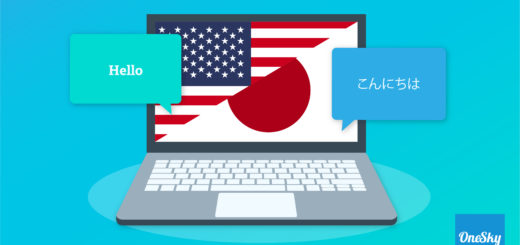Unlocking Global Potential: An Insight into Localization Technology
Having a solid localization strategy in place is critical to your global growth. It’s the best way to directly connect with your global audience, building global brand awareness that will lead to brand advocacy later on.
Trying to decide if localization is worth the investment? Data shows that localization alone can increase conversion rates directly by 20% (minimum!) Additionally, 86% of local ad campaigns feature higher click-through rates than non-localized competitors.
Not sure where to get started? We don’t blame you. There are near-endless opportunities to localize and globalize your content. It can be helpful to remember that your starting point is just that — a starting point or a “jumping off” point to a bigger, broader, and more comprehensive localization strategy.
Below, we’re exploring what localization is, different techniques to try, and future innovations to look forward to for later implementation.
Defining Localization & Its Importance
Localization and internationalization, while complimentary, are not the same thing. Understanding the differences between both concepts and using both of them in their own independent contexts will lay the groundwork for sustainable and profitable expansion over time.
Internationalization is the process of creating a product that can be easily consumed around the world. This means that prior frameworks will have been laid for display differences, website flow changes, and more to accommodate the preferences of a global audience. Localization, on the other hand, holds a similar focus on a more micro scale—focusing nearly exclusively on user experiences and preferences across regions that you plan to expand into.
Traditional vs. Modern Localization Techniques
Localization has come quite far since the early days of the international market. Previous localization workflows were extremely limited, relying mainly on human translators and native contacts to make decisions around localization techniques and preferences. While this did, at times, offer high-quality insight and support, it was by no means immersive or expansive enough to cover the diverse needs of the global market at large—meaning that corporations and industry leaders were left leaving money on the table.
In today’s day and age, expansion into new markets is a given for many SMBs—and it’s much more in reach thanks to social media, subject-matter experts (SMEs), and other tech-driven optimization tools.
What once would take years now takes a matter of months. Many believe that this is thanks to advances like comprehensive language services, neural machine translation, skilled providers, and translation management systems (TMS).
Machine Translation: Blessing or Curse?
While translation is independent of localization, it does play a pretty major role in your expansion process. Now that you know it’s essential, it’s time to answer the question of which is better: neural machine translation or automated translation software? Or human translators with native-level expertise that fit seamlessly into your translation process?
There is no easy answer. It’s generally best to assess what your needs are in the expansion process moving forward from that point on. Once you do that, you can look at the pros and cons of each option and make the best possible decision for you.
We’ve summarized considerations related to each option below:
- Machine translation: While these types of automation- and artificial intelligence-based tools can be handy in a pinch, they’re not usually the best types of translation technology to go with. They often don’t consider the nuances of their native language, choosing instead only to offer blunt translation. This can result in less-than-accurate results done via machine learning and text that isn’t as impactful as it otherwise could be if a human translator had done it.
- Plus, you may not be saving as much time as you think. While the translation can be done in mere seconds, it often requires the oversight of a skilled human translator for that special infusion of connection and cultural fluency. This can get pretty expensive—and can be reason enough for many to switch to translators who know the native language and can make your content pop.
- Plus, you may not be saving as much time as you think. While the translation can be done in mere seconds, it often requires the oversight of a skilled human translator for that special infusion of connection and cultural fluency. This can get pretty expensive—and can be reason enough for many to switch to translators who know the native language and can make your content pop.
- Human translation: This method of translation can take longer; however, you’ll walk away with quality content that has been steeped in culturally relevant influence and context. Human translators can fit seamlessly into your business expansion strategy, supporting you with quality translated content for your localization projects. The best part? They can work either in person or within a cloud-based system for simplified management and flow.
Content Management Systems (CMS) and Localization
Content management systems are a vital part of your ecosystem, supporting automation and efficient workflows throughout the expansion process. Using a CMS helps you keep your content organized as you translate across different languages. It also can integrate well with other translation tools or localization services via plugins and extensions; further streamlining your workflow.
If you’re on the hunt for a CMS, be sure to evaluate options that include lightweight APIs and prioritize your user experience. Ease of use will be a major determining factor in the adoption of the CMS in your organization—which ultimately dictates the quality and success of your rollout as a whole.
Translation Memory Technology
Time is precious—and that’s especially true in business. New technologies (such as translation memory technology) ensure that you’ll never translate the same word twice, redirecting your translation resources in the most efficient way possible.
The translation memory process is simple. The technology uses speech recognition to pick up on previously translated words, “skipping” over them and filling in the blanks with the stored corresponding word. This simple swap keeps your multilingual expansion incredibly effective, putting money and time back into your pocket.
Keeping an automated “translation bank” also helps your brand to remain consistent in wording and phraseology, helping you to avoid costly mistakes.
Localization Testing Tools
Localization testing tools are vital to your multilingual expansion process. They mimic the user experience that an actual user would get, identifying glitches, points of failure, and areas of lowered UX that could affect your bottom line.
Innovations on the Horizon
Localization is a field that has continued to evolve. Here’s just a glimpse at what you can expect to see in the coming years:
- AI-driven localization: Artificial intelligence can work in tandem with human translators and specialists, cutting your rollout time in half without sacrificing quality.
- Real-time translation: Driven by a complex neural network informed by real human translators, real-time translation is designed to produce comparable human results with the ease and accessibility of automation.
- Centralized, cloud-controlled TMS: While translation management systems strive to be as centralized as possible, we expect to see more holistic designs and integration opportunities in the coming months. All of these changes are designed to preserve your resources wherever possible, keeping you efficient through every stage of your rollout.
Leverage Cutting-Edge Localization Technology with OneSky
Technology has come leaps and bounds from what it once was, facilitating multilingual launches around the world and across industries. Of course, every option has its pros and cons, which ought to be considered before a specific path or tool is chosen.
If you’re looking for a comprehensive translation management system that is designed to support your internationalization and localization processes, connect with the team at OneSky today. Our experts are here to centralize and streamline your efforts, keeping you in your most effective workflow yet.
Ready to get started? Connect with us online and try OneSky for free today!



 Written by -
Written by - 
 Written by -
Written by - 





 Written by
Written by 


